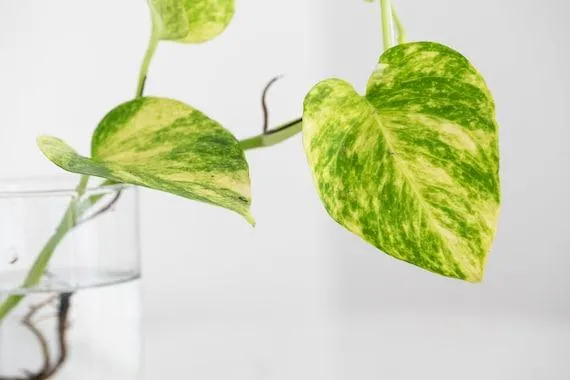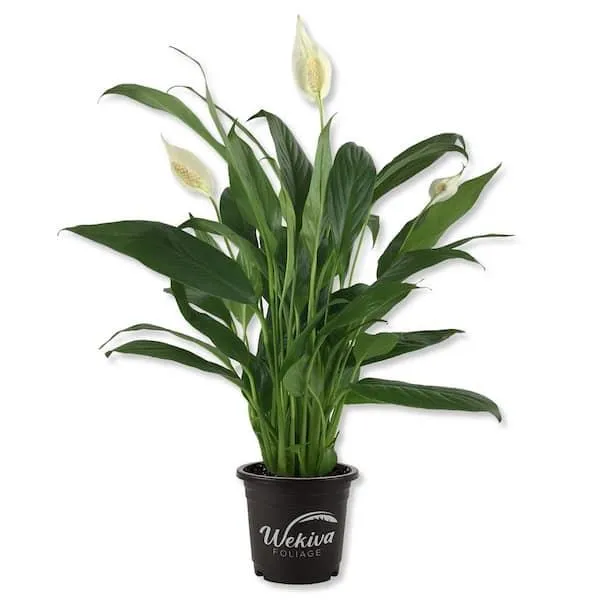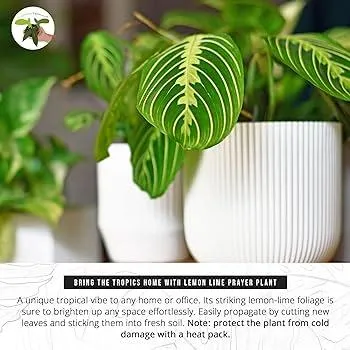Everything You Need to Know About Variegated Houseplants
If you’ve been searching online for information on variegated leaves house plants, you’ve come to the right place. As an avid gardener and plant parent, I want to share everything I’ve learned over the years about these unique and visually appealing houseplants.
What are Variegated Plants?
Put simply, variegated plants have leaves with more than one color. Most commonly, the leaves will feature patches or stripes of white, yellow, pink or creamy colors contrasting with the normal green of the leaf. This patterning is the result of a genetic mutation that causes parts of the leaf to not produce chlorophyll, the pigment responsible for photosynthesis. Without chlorophyll, those sections remain their natural lighter shade.
- Albino Variegation – No chlorophyll at all, resulting in pure white leaves.
- Plastic Variegation – Variegation that appears on new growth and stays stable.
- Revertible Variegation – Prone to losing variegation on new growth and reverting back to solid green.
Popular Variegated Houseplants
Some top choices for adding variegated foliage to your home include:
– Pothos (Epipremnum aureus) – One of the hardiest with heart-shaped yellow or white splotched leaves.
– Philodendron ‘Birkin’ – Trendy cultivar with cream and green stripes that tolerate low light well.
– Chinese Evergreen (Aglaonema species) – Tropical foliage plant with white or pink edges coming in many cultivars.
– Peace Lily (Spathiphyllum species) – Arching white variegated leaves on this low light darling.
– Spider Plant (Chlorophytum comosum) – Rounded pointed leaves sported with creamy stripes are very portable.

Does this help give you an idea of some top variegated plant picks? Let me know if you need any care tips for specific varieties.
Benefits of Variegated Plants
Aside from their stunning visual appeal, variegated plants offer some great perks:
Low Light Tolerance: Variegated leaves tend to be more successful than solid green under lower light conditions since they produce less chlorophyll. Many become leggy or lose variegation in very bright areas.
Pest Resistance: Pests like spider mites may find it harder to thrive on variegated plants since they receive less sap from non-photosynthetic leaf sections.
Eye-Catching Décor: The patterns really make a dramatic artistic statement and can be focal points or accents in your home’s design. No other décor adds as much visual interest!
Varied Care Needs: Each cultivar has unique growing requirements, so exploring different variegated types prevents collection boredom and expands your horticulture knowledge.
So in summary – they tend to handle indoor conditions better while upping the aesthetic factor significantly. Who wouldn’t want that for their plant collection?
Tips for Growing Variegated Houseplants
Now that you’re sold on the benefits, here are some tips I’ve found helpful for thriving variegated foliage based on lots of trial and error over the years:

- Provide adequate but not excessive light. Most prefer moderate indirect sunlight rather than direct rays.
- Monitor moisture carefully as dry spells can cause loss of variegation while overwatering also promotes reversion to solid green.
- Fertilize during spring and summer using a balanced houseplant formula at half strength every 2-4 weeks.
- Prune off any reverted non-variegated sections as needed to maintain the color pattern you want.
- Water before the soil is bone dry but avoid sitting in water by using well-draining potting mix in containers with drainage holes.
- Control pests like mealybugs or spider mites aggressively since weakened variegated plant tissue may be more vulnerable.
- Give plants the possibility of a dormancy period by limiting water and placing in a slightly cooler spot if growth seems sluggish.
With some routine TLC following those guidelines, you can enjoy your variegated beauties for years to come. But let me know if you have any other specific questions!
Dealing with Reversion
One challenge many new plant parents face is variegated foliage that begins to revert – growing back solid green instead of maintaining its pattern. This can happen for a few reasons:
Genetics may predispose a cultivar to losing variegation over time. Some variegation is not perfectly stable. Reversion is more common in plants receiving too much sun where all leaf tissues are productive. Stress from issues like overwatering can also trigger reversion.
The good news is it’s usually possible to offset reversion through pruning or propagation. Simply cut off any all-green sections and remove from the plant. You can also take cuttings from the strongest variegated areas to restore the color pattern through new growth. With care and tending to its light and moisture needs, most variegated plants can hold their variegation long term.
Let me know if you find your plant starting to revert more than you’d like. We can troubleshoot care factors that may be contributing and strategies for addressing it. With some TLC and maintenance, you should be able to maintain those colorful patterns!
Variegated Plant Questions Answered
I hope this overview has covered most of your queries about choosing and growing these statement foliage houseplants. Before you go, let me address a few other questions I’m commonly asked:
Does variegation affect a plant’s overall health? For the most part, no – variegated versions tend to be just as robust as their solid counterparts. The lack of chlorophyll just modifies their light requirements slightly.
Will variegated cuttings always produce variegated new growth? It depends on the cultivar’s genetic stability. Some will reliably produce variegated offspring but there’s always a chance reversion may occur in a small number.

Can variegated plants be propagated through seed? Rarely, since variegation is the result of a genetic mutation. Seeds would produce seedlings mixing variegation traits unpredictably. Stick to stem cuttings for predictable results.
Will adding plant fertilizer help or hurt variegation? In moderation, balanced fertilizer can boost growth without risk of burning sensitive variegated tissue. But lay off during winter when plants are semi-dormant.
Hope this Q&A helped provide even more clarity on your plant parenting journey with these show-stopping beauties. Feel free to post any other questions in the comments – I’m always here to help fellow plant lovers succeed!
Variegated Leaves House Plant Comparison
| Plant | Care Level | Light Needs | Watering | Size |
|---|---|---|---|---|
| Peperomia | Easy | Low to medium light | Allow soil to dry between waterings | Small to medium |
| Chinese Evergreen | Easy | Medium to high light | Water when top inch of soil is dry | Medium to large |
| Philodendron | Easy | Low to medium light | Water when top inch of soil is dry | Small to large |
| Pothos | Very easy | Low to bright light | Allow soil to dry between waterings | Trailing vine |
| ZZ Plant | Very easy | Low to bright light | Water infrequently, when soil is dry | Medium to large |
FAQ
-
What kinds of variegated leaves are most popular?
Basically, the ones with white or yellow streaks and spots tend to be the most common. Things like marble queen pothos and golden pothos have sort of cool blotchy patterns that lots of folks seem to dig.
-
Do the leaves stay variegated or will they lose their patterns over time?
Sometimes variegated leaves can lose their markings if the plant isn’t getting enough sunlight. However, as long as you give it enough sun, the patterns should stay pretty stable. Still, colors can fade a tiny bit naturally with age. But with good care, the variegation isn’t usually something they kind grow out of completely.
-
How much sunlight do variegated plants need?
Most variegated plants need at least partial sun to keep their markings bright and clear. Too little light and the green may kind of overwhelm the other colors. That said, some can tolerate a bit of shade too. It really depends on the specific plant. As the old saying goes, when in doubt, “more sun is better than less sun.”
-
Will the variegation be passed on if I propagate the plant?
It can go either way really. Sometimes the new growth will stay variegated, but other times it may revert to all green. So you never know for sure until thebabies actually start sprouting. I guess that’s part of the thrill and mystery of propagation! You won’t know if your efforts will pay off variegation-wise unless you give it a shot.
-
Do variegated plants grow more slowly than their solid green counterparts?
Generally speaking, variegated plants do tend to have slower growth rates than non-variegated varieties. The brightwhite or yellow patterns use more energy to produce, so the leaves and stems don’t bulk up as rapidly. However, On the other hand, slower growth can be a plus too since it makes for more compact, well-behaved specimens indoors.

-
Is it harder to care for a variegated plant?
Not really. The care is basically the same as for their solid colored friends. You still want to water them when the soil is dry, give them sunlight, trim off dead or sickly growth. Really the only extra challenge could be if the variagation itself starts to fade due to insufficient light. But as long as you meet their needs, variegated plants are pretty low maintenance beauties to keep around.
-
Are variegated plants more expensive than all-green ones?
You bet! Because the patterns are a result of genetic mutation, variegated plants are seen as a bit more exotic and uncommon by plant collectors. And since the variegation may not come through if propagated, suppliers need to protect their variegated cuttings. So unfortunately, you’ll likely pay a premium for that pretty blotchy foliage. It’s one of those cases where you truly do get what you pay for appearance-wise!
